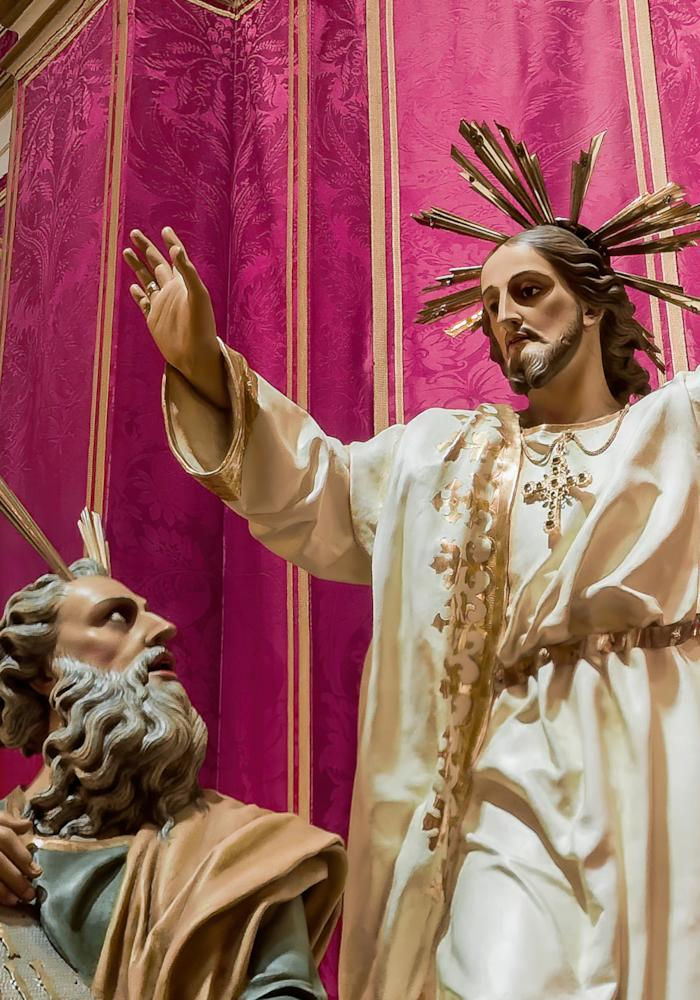







Parish Church of Our Saviour in Lija
In 1592, Bishop Gargallo granted the title of parish to another older, smaller church, also dedicated to the Transfiguration and situated a few metres away from the present church. However it soon became evident that this church was too small to serve the community’s needs.
So in 1653 the money was raised to buy the field that would finally serve as the location for the present church. One year later, on the 20th May 1694, bishop Cocco Palmieri laid and blessed the foundation stone for the new church.
Construction began immediately and took just over six years to complete. In July 1702, the new church was consecrated and dedicated to the Transfiguration. The church is 37 metres long and approximately 27 metres at its widest. The architect was Lija native Gianni Barbara, born in 1642, and is designed in the Tuscan Order architectural style with elements of Renaissance Doric. A committed parishioner of Lija, Barbara was well suited for the job, creating a parish church that reflected the desires and ambitions of the community.
A well respected architect, so much so that he became the ‘Capomaestro’, the Master Builder of the Order of the Knights of St John. He was also responsible for the design of the Church of St James in Valletta. He died at the age of 86 in 1728.
In 1880 the painter Injazju Cortis was commissioned to work on the vaulted ceiling of the church.However, parishioners soon got impatient with the slow, meticulous work of the artist and brought in another important artist, Giuseppe Cali, to finish the work. All the same, Cortis did manage to finish off three apses, masterpieces in their own right.
The first above the choir shows God the Father, surrounded by angels. A second depicts Christ and the Sermon on the Mount. And the third and final Apse shows Christ descending to Limbo.The rest of the ceiling was painted by Cali who divided the area into sections, each depicting a different episode.In the vault above the choir we can see the Annunciation.
In the nave, on the other hand, we see three events: Christ and the good Samaritan, The resurrection of Lazarus, and finally Christ and Zacchaeus.
The Maltese artist Giuseppe Cali was born in Valletta in 1846. At the age of 17 he went to Naples to study at the Academy of Fine Arts under the mentorship of Giuseppe Manicelli.
A prolific artist he is considered the founder of modern art in Malta. He has left a legacy of over 600 paintings to be found in private collections, churches and public institutions. Cali was a truly unique Maltese artist. He died on 1st March 1930.
The Titular Statue of The Transfiguration is the work of Maltese artist Carlo Darmanin and was created using the papier-mâché technique in 1864.
Darmanin won the commission after successfully bidding in a competition organised by the parish. However, the final design differed from the original - excluding three apostles, due to the increased size of the statue. In 1926, a plinth was designed by Lija resident, the architect Alfred Zammit, and it was crafted by master craftsman and Birgu citizen Vincenzo Vassallo.
Carlo Darmanin, better known as Carlozzo, was born in L’Isla in 1825. He took up his apprenticeship when he was very young, and along with his brothers worked under their father who was a marble mason. Giuseppe, Carlo’s father, took on various commissions working on altarpieces as well as baptism fonts and marble gravestones.
However the arrival of a Sicilian marble mason led the family business to diversify and so Carlo, along with his brother Giuseppe, learnt the art and craft of statuary using papier-mâché.
He was particularly well loved for his faces of cherubs and angels as well as the faces of women from the Old Testament. Known as ‘ The Prince of Statuary’, Darmanin is renowned for some of the most well-loved titular statues on the island, including that of St Cajetan in Hamrun, St Leonard in Kirkop and Christ in the Garden of Gethsemane in Bormla. He died at the age of 84 in 1909.

